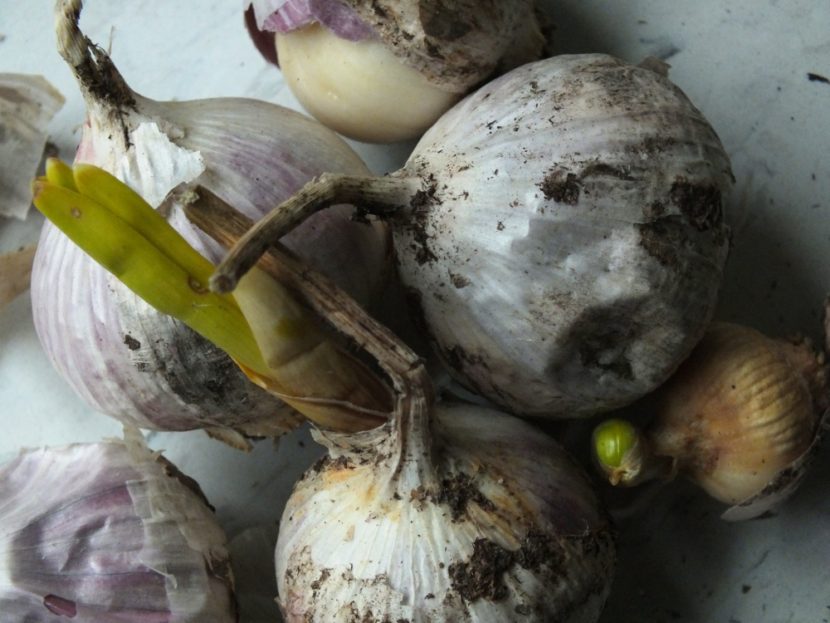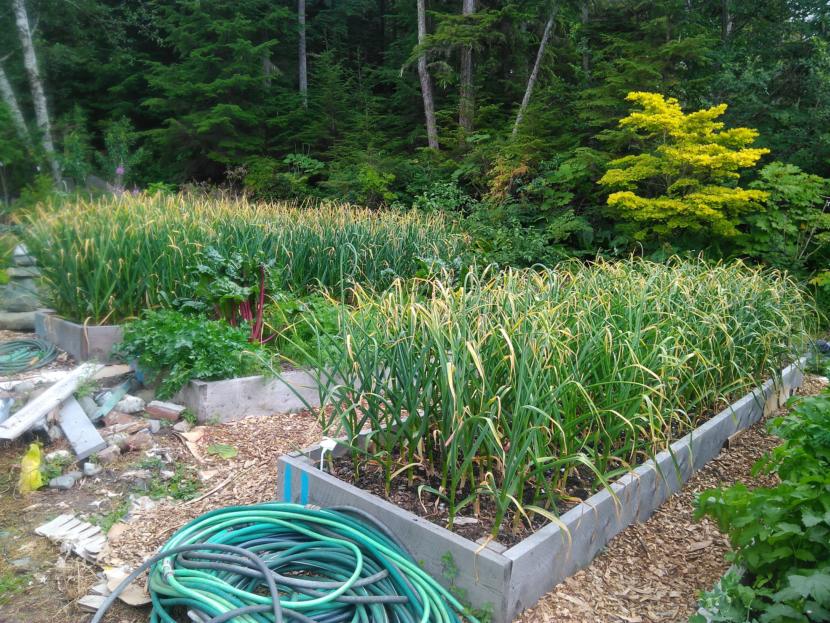
A Haines vegetable grower is set to embark on a mammoth effort to plant thousands of tiny garlic cloves.
Master Gardener Ed Buyarski explained more about Scott Hansen’s efforts during a recent edition of “Gardentalk.” He said Hansen will enlist the help of family members to get 10,000 garlic cloves planted over the weekend or over several days. Since garlic cloves must be oriented with the pointy end up, they all have to planted by hand.
But Buyarski said Hansen has found a way to expedite harvesting on his half-acre plot next summer.
“He is going to try to use his tractor and potato digger to lift the garlic once it’s ready,” Buyarski said.
Buyarski and a fellow grower in Juneau together have harvested about 500 bulbs each year, which usually yields about 3,000 individual cloves.
Whether it’s 10 or 10,000 garlic, there are some basic techniques that any gardener should keep in mind.
It’s best to use hardneck garlic, not the softneck garlic that you usually find in the vegetable section of retail stores.
Break apart each garlic bulb and use the biggest individual cloves for replanting. Set aside the smallest individual cloves for cooking.
Find a plot with good drainage and ample sun.
Before planting, be sure to mix extra nutrients into the soil in the form of compost, seaweed, horse manure, brewers grain, or coffee grounds.
Plant each clove with the pointy end up, about 2 inches deep and 6 inches apart.
On top of the soil, layer with seaweed or other mulch, and then cover with plastic to prevent the fall rains and winter snow from rotting the garlic and washing the soil’s nutrients away.

Do you have a garden question for Ed? Fill out the form below, and he’ll answer your question in an upcoming segment.
Listen to past episodes and subscribe to the podcast on the “Gardentalk” page, so you’ll never have to worry about missing Thursday’s live radio broadcasts.
